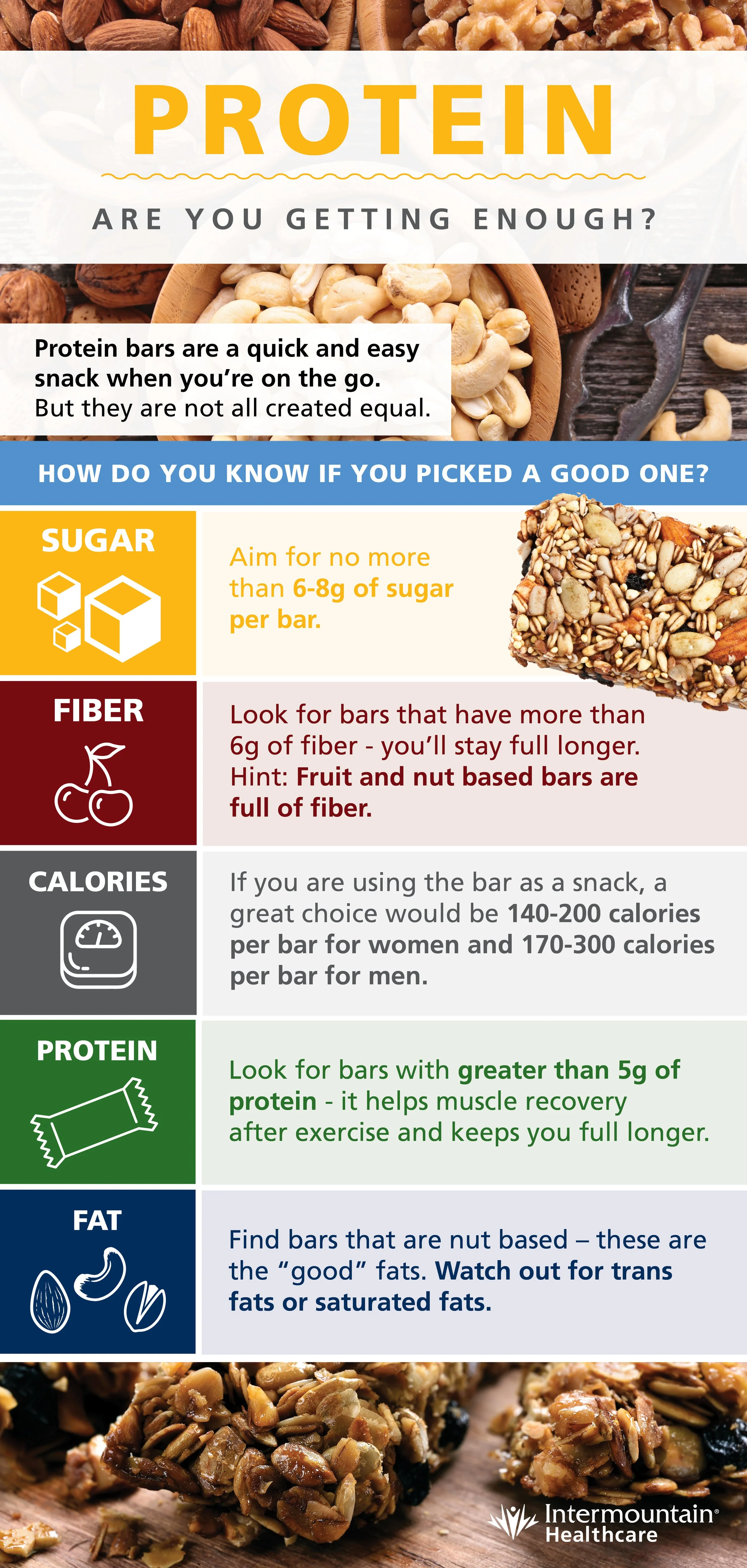A blog by Intermountain Healthcare
Protein — it's a hot topic in nutrition these days. Do you wonder if you’re getting enough? And what’s the best source of protein anyway? Truth is, most of us get plenty of protein in our diets, so why the HUGE selection of protein bars at the store?
One word: convenience.
Protein bars make a quick and easy snack to grab when you’re on the go. But they're not all created equal. In fact, some lean more towards being a candy bar instead of a healthy snack option. So how do you know if you picked a good one or not? Consider this… knowing why you are buying protein bars will help lead you in the right direction.
Bars with more carbohydrates than protein are better for energy bursts or a post-recovery workout snack.
Bars with large amounts of protein (20+ grams versus 7 grams) are great for those who exercise strenuously or do heavy weight lifting.
Are you looking for a meal replacement or a snack option? If looking for a snack, choose one with fewer calories.
What Makes Up a Healthy Protein Bar?
So, where do you start when trying to pick a healthy protein bar? Start by looking what does into the protein bar and how that compares to your nutritional goals. Let the label be your guide:
SUGAR - A quick glance at the ingredient list will let you know if there is undesirable ingredients like sugar (including sucrose, corn syrup, and high-fructose corn syrup). Sometimes sugar alcohols and artificial sweeteners are used and can have a downside too. Sugar alcohols do contribute to calorie content and may elevate blood sugars. They can also cause bloating and abdominal discomfort. Aim for no more than 6-8 grams of sugar per bar. Keep the ingredients simple.
FIBER - Look for bars that have more than 6 grams of fiber. This will help you stay fuller longer, help promote healthy gut function, and will help control blood sugar. Keep an eye out for bars that are fruit and nut based, they're loaded with fiber.
CALORIES - When selecting a bar consider the calorie content. If you're using the bar as a snack, a great choice would be a bar with 140-200 calories per bar for women and 170-300 calories per bar for men. Those trying to gain weight or those who have higher calorie needs may consider a higher calorie bar- it may be a great way to get in extra, easy calories. However, if you’re trying to lose or maintain your weight, consuming a high calorie bar will defeat your purpose. You may be better off replacing a 400 calorie bar with 6 oz of lean meat, 2 cups of vegetables and ½ cup rice or potatoes to help you feel more full than a bar might.
PROTEIN - Protein bars should contain protein, right? But surprisingly, many fall short as “protein bars.” Look for bars with greater than 5 grams of protein - it will help recover muscles after exercise and helps you stay fuller longer. Depending on your exercise goals, how many grams of protein you need can vary so find the protein bar that fits your needs. If you’re looking for fat loss, a 2:1 ratio of protein to carbs in a bar is recommended, a 1:1 ratio would work too. If you want to build muscle or use the bar after a workout for recovery, you'll want to get closer to a 1:2 ratio. Long endurance athletes, like marathon runners, could even use a bar with a ratio of 1:4.
FAT- Look for bars that DO NOT contain trans or saturated fats. Many bars are made with a nut base, these are the “good” kinds of fats that will help keep your heart healthy.
Can a protein bar fit into a healthy diet? You bet! Protein bars can be a quick snack on the go and help manage your nutrition goals when carefully chosen. Happy snacking!


